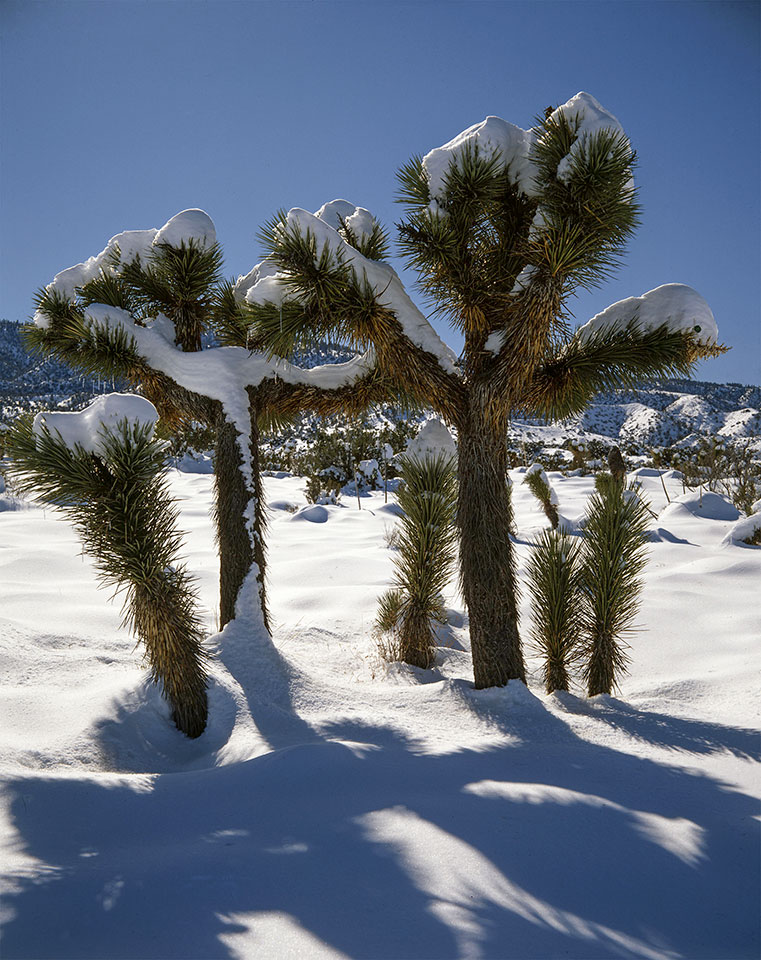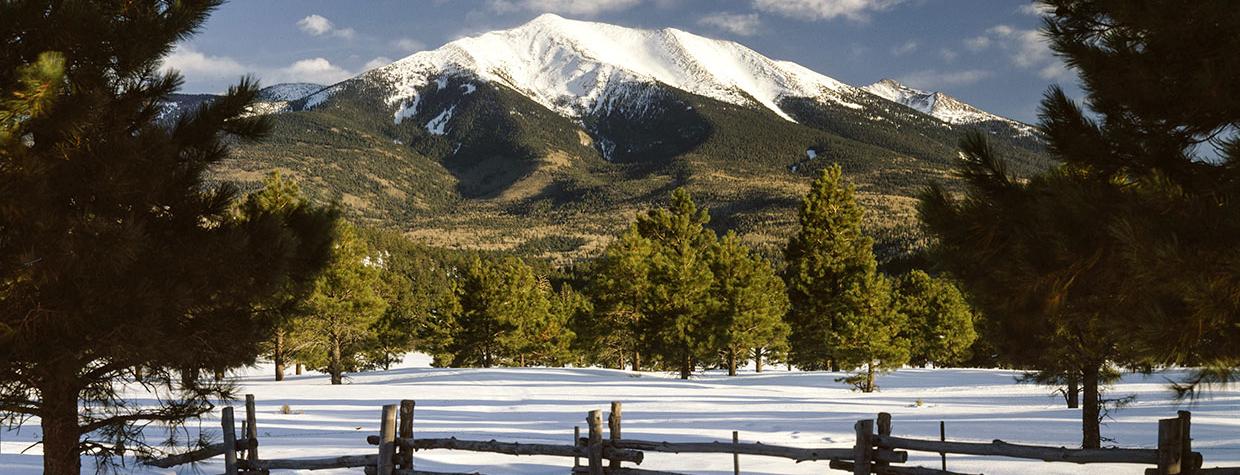Editor’s Note: By December 1944, at the height of World War II, our editor and art director had stepped away from the magazine to join the war effort — Raymond Carlson had enlisted in the Marines, and George Avey had gone to work for the Navy. In their absence, our interim editor, Bert Campbell, ran an essay by a longtime contributor. It was, in part, a tribute to the men and women fighting overseas. Nearly eight decades later, there’s still instability in the world, and so many men and women will be away from home for the holidays, serving their respective countries. This essay is dedicated to them, and to their colleagues whom we have lost.
THE SPIRIT OF CHRISTMAS WILL REIGN IN ARIZONA, this year of our Lord 1944, from the pine-laden hills and snowcapped peaks of the highlands to the orange-blossom-scented lowlands.
On the slopes of the San Francisco Peaks near Flagstaff, and Mount Mingus near Prescott, skiers will glide over the inviting trails and call a “Merry Christmas” to their fellow enthusiasts, while at the Grand Canyon, the yule log will blaze merrily. On the great highland plains, cattlemen will sit by open fires in their comfortable homes and hold family festival, while under the canopy of stars, a lonely herder will watch the heavens, unconsciously listening for a song on the wind, and scientists will scan the firmament for new stars and constellations through the great telescope at Mount Lowell. From the mines and smelters, workmen will return home from hours of toil to hear the peal of Christmas chimes, and on the [Tohono O’odham Nation], faithful Indians will crowd ancient San Xavier for the Christmas Mass.
On the desert, a “sourdough” will pause and look upon the melancholy countenance of his pack burro — a far-off brother of the one who did homage
to the Christ Child in that distant manger in Bethlehem so many centuries ago, for the prospector and his burro are still familiar sights in Arizona, as they travel across desert and mountain in search of the rainbow’s end.
In the Valley of the Sun, many will enjoy the warmth and the palm trees and a cooling dip in blue pools, while others will sit on open verandas and patios, lulled by the scent of orange blossoms wafted from nearby groves; and on the vast guest ranches, riders will take to the trails and invigorating air of December on the desert — to all it will be Christmas, the happiest season of the year.
But in all our homes, joy will be tempered by the concern felt for those young men and women in the armed forces and far from home — in Italy, England, within the Reich, in distant islands and in prison camps, on ships and in the air. In the skies will be planes from Arizona flying bases, flown by boys from many states and other nations, and many a lonely family circle will find solace in the welcome afforded these strangers in our land.
Christmas as we know it, as a time of festival, undoubtedly gained this characteristic in Rome, where the date was established as an antidote to the licentious Saturnalia of pagan idolatry. Other peoples gave Christmas the traditional temperate-zone setting of fir trees, holly and mistletoe. Still others created beneficent saints — the St. Nicholas of the English, Kris Kringle of the Dutch and Santa Claus of the Germans.

Arizona has an ideal setting for the observance of Christmas. An analogy may be drawn between our wide desert spaces and rugged hills with the Judea of Holy Writ, and our rich valleys are replicas of those of the Jordan. Our fruit is of Palestinian character, our grapes, dates, pomegranates and figs rivaling the best from the gardens of Kedron. Even the dreadful crucifixion thorn is found on our deserts.
Giant spruce, fir and pine cover our mountainsides, and mistletoe clusters in the cottonwoods and oak boughs in the best Yuletide tradition, while the star-studded skies lend mystery to the night and guide the Little Stranger on his journey on Christmas Eve. The moon shines upon giant saguaros and desert sands, and once upon a time, a camel caravan was seen in these parts.
In the cities, the church bells peal over all the land and happy carolers move from house to house to sing before lighted windows. This is the Christmas setting in Arizona.
Christmas first came to Arizona with the Padres, in their migration westward during the Spanish conquest. Possibly the first day of Mass and festival in our Southland was celebrated at San Xavier or Tumacácori. But in the ancient Hopi villages, the customs of gift bringing and exchange of good wishes antedate the earliest known Christian observances.
The first community Christmas with the modern touch was held in Prescott in the Territorial Governor’s Mansion about 1864. The community decided that the few children of the frontier town must have a Christmas party, so the men brought in a fine, large tree and placed it in the mansion; the women decorated it with what could be found — probably paper chains and strings of popcorn. Then, in a room with a great log burning in the fireplace, the children gathered for the first traditional Christmas in Arizona.
Presents for the children were freighted via Yuma and Ehrenberg, and no doubt much of the funds for the party came from “The Row,” where many lonely cavalrymen, gamblers and dance-hall girls longed for the home ties of Christmas and were determined that every American boy and girl in Prescott should know the joy of that season. The church was probably represented in the gathering, since one member of the governor’s party was an ordained minister.
Churches grow in communities where the meaning of Christmas is carried in the heart, and so churches have grown in number in Arizona until the smallest hamlet has one or more. On Christmas Eve, thousands of the faithful go into sanctuaries, dimly lighted and pervaded by soft organ music, heralding again the birth of one born in a manger, and before whom the high and low bow down and worship. Prayers, audible and silent, will fill the air and airways for the safety of our boys and girls across the seas and for the coming of a lasting and righteous peace.
The most joyful festival in all the world will, for a short period of time, overcome the destructive power of hate and bursting shells, and on a far-off island, a chaplain will lead his “Bushmasters” in the familiar “Silent night! Holy night!”

